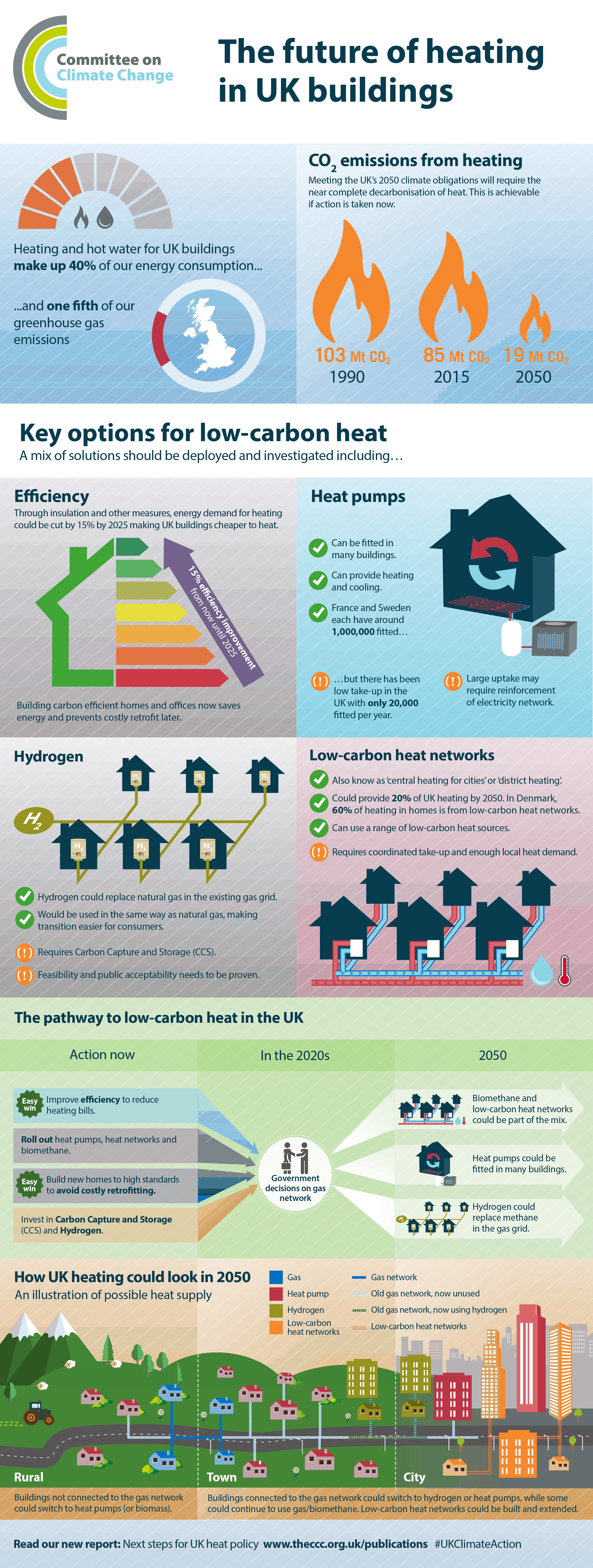Around 40% of the UK’s energy consumption is for heating and hot water, and this makes up around 20% of our greenhouse gas emissions. To meet targets set in the Climate Change Act, we will need to eliminate much of these emissions by around 2050. There has not been significant progress on this to date, and it has been reported that the government needs a new strategy and a stronger framework for decarbonisation over the next 30+ years.
Action is required now, according the the Committee on Climate Change, which produced a report recently that outlines the next steps for the UK, to ensure they start to make a positive move towards this important target. The key messages in the report covered the following:
1. Government must set out the role of hydrogen for buildings on the gas grid in the next Parliament.
2. Action is required now to reduce emissions, and to prepare for future decisions.
3. The forthcoming Emissions Reduction Plan must incorporate an immediate action, and prepare for decisions to be made in the next Parliament.
Actions, which need to be taken now:
1. New build homes should be highly energy efficient, and designed to accommodate low carbon heating, and not need a retro fit in 15 years time.
2. There must be energy improvements for existing buildings.
3. Low carbon heat networks.
The Role of Wood:
As we have mentioned before, wood is a highly sustainable heating source, and can certainly play a key role in helping the UK achieve their 2050 target. Whilst wood as a main heating source may not be suitable or realistic for all, there is certainly a role in many homes for wood as a secondary heating source, above and beyond the use of less environmentally friendly fossil fuels. More about wood and it’s green credentials and usage in the UK can be read here.
This infographic below, from the Committee on Climate Change outlines the future of heating in UK buildings:









